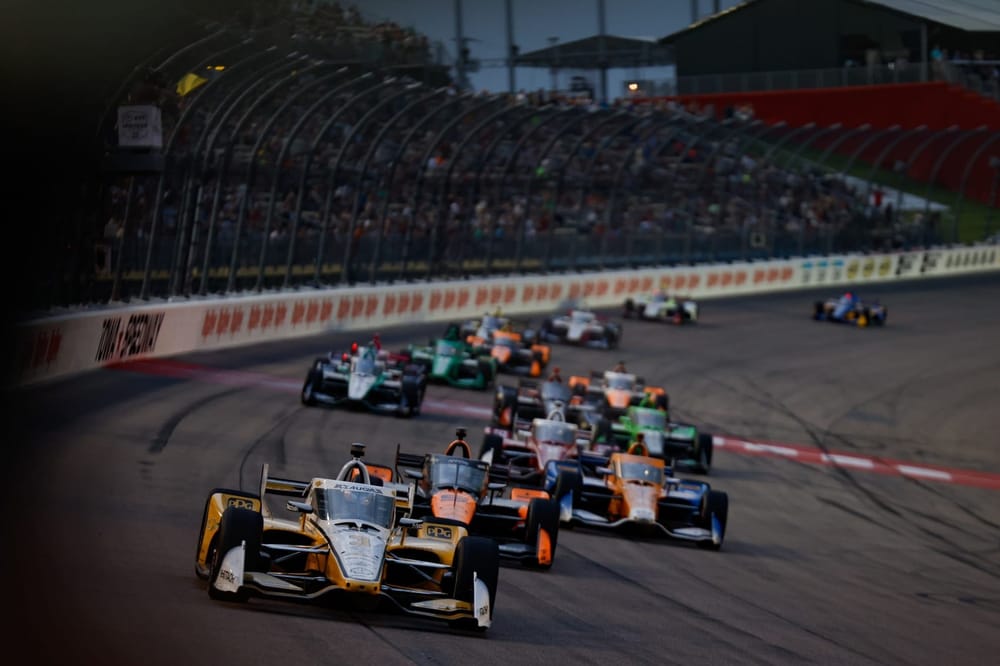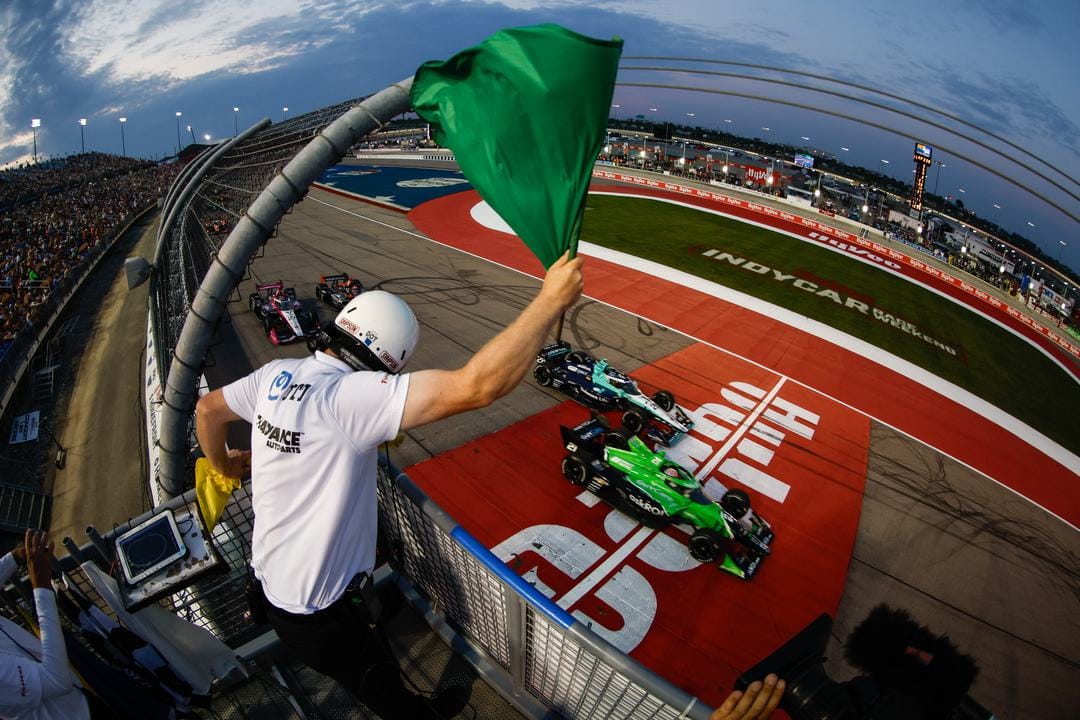When even double champion Alex Palou - someone who rarely criticises IndyCar and has an admirable quality of seeing the bright side on almost every occasion - admitted that last weekend's Iowa races were “the most boring thing I've ever done” it was telling.
Ace oval driver Pato O’Ward added that they’ve “ruined a great race”, while Sunday race winner Will Power said “we certainly have to do something for next year”.
What caused the issues Iowa faced, and why were drivers left “crapping your pants”?
Why the track offered such poor racing
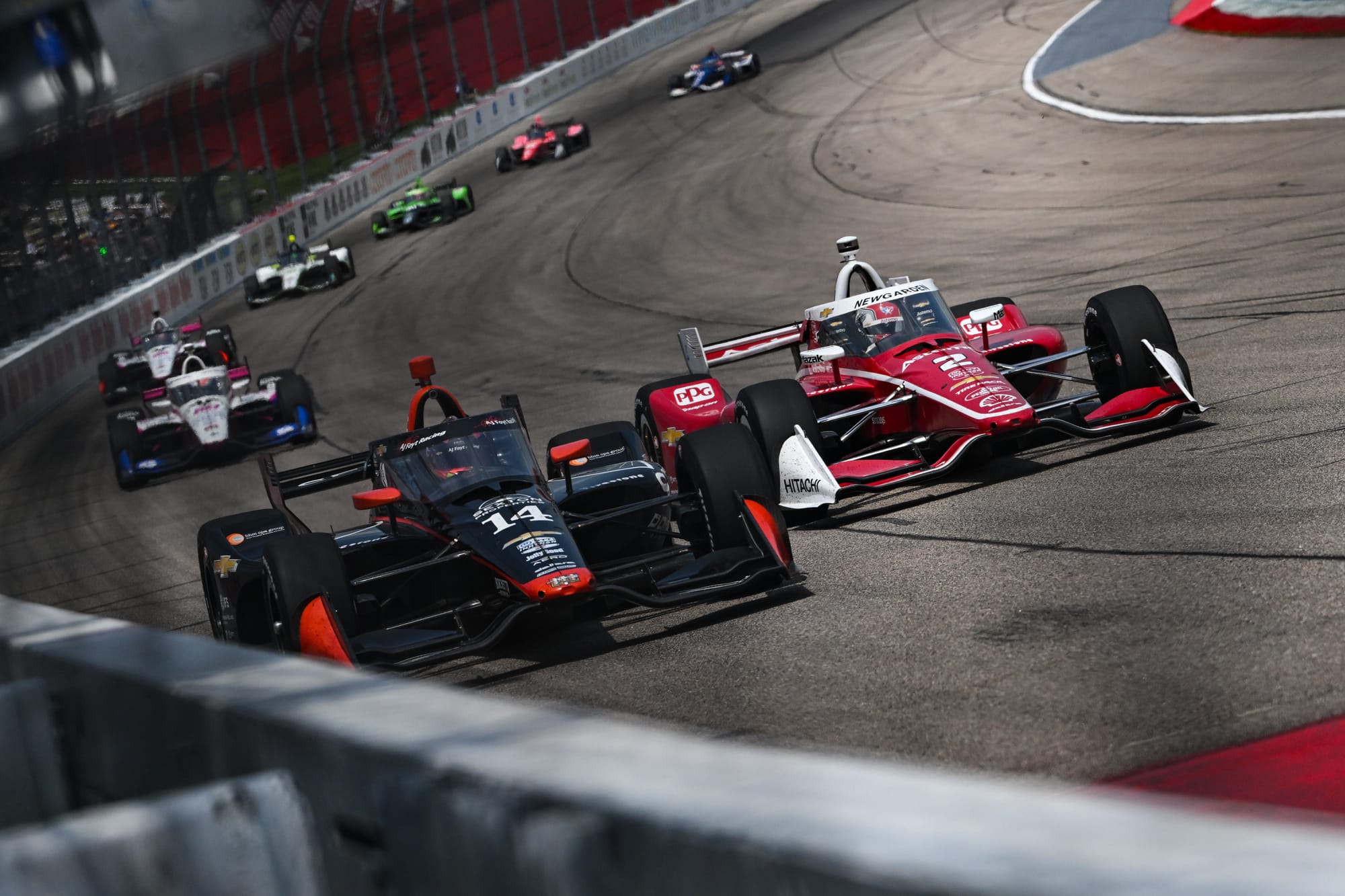
Josef Newgarden had won five of the last seven IndyCar races at Iowa heading into the weekend, so his failure to add to that might be seen as something of a victory for an interesting outcome. (Though I’d argue seeing Newgarden dominate to that level is exactly what people should want to see given you’re watching greatness in front of you; isn’t that a big part of why we watch sport?)
In any case, while a different outcome might suggest the racing was more interesting, in actual fact the total lack of a consistent second lane on the track meant overtaking was incredibly tough.
The high line could be used for a few laps after a caution - because the track had been swept and everybody wasn’t up to full speed - but as soon as the drivers on the bottom of the track got to full speed, they weren’t going to be beaten later in a stint. The outside line was just slower.
IndyCar has experienced similar issues at Gateway and Texas in recent years.
"The track is very enjoyable by yourself," said O'Ward. "The problem is it's not very fun when you just can't get by anybody. You can't fight.
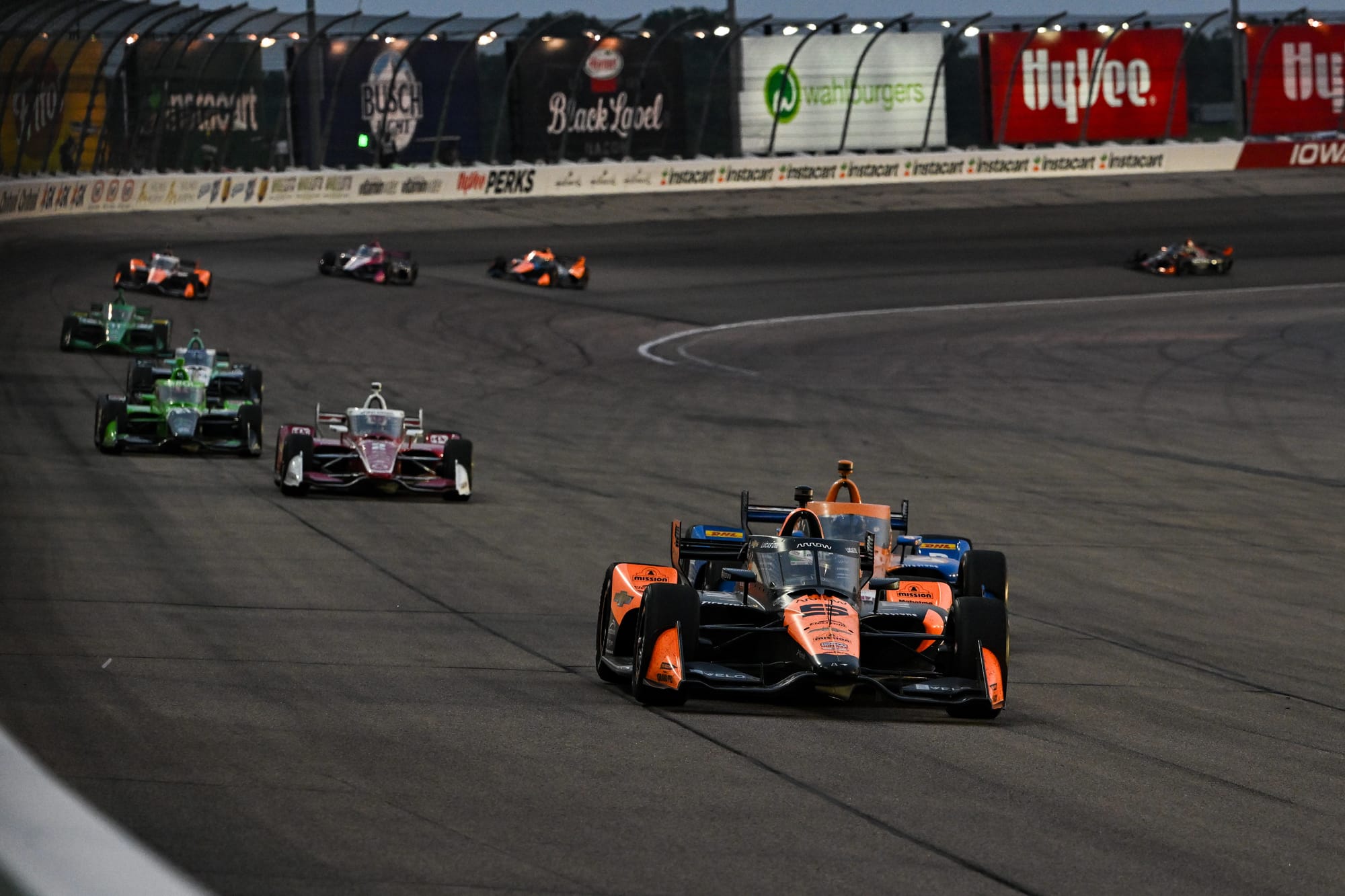
On the point about the crossover when the high line was no longer suitable, the McLaren driver added: "When you're done with that first lap after the restart, you can't [run up high].
"Once you get the momentum going, it's just accepting [you might hit] the wall basically, or at least really crapping your pants."
One of the biggest issues with the optics of poor racing was that Iowa has frequently been one of the best oval races in recent years. So to go from that benchmark to this probably exacerbated how bad it was in people's eyes.
"It was a shame because it used to be a really cool race I think for the fans with tons of overtaking and tons of tire deg and things to do," said Palou.
The pre-race cause
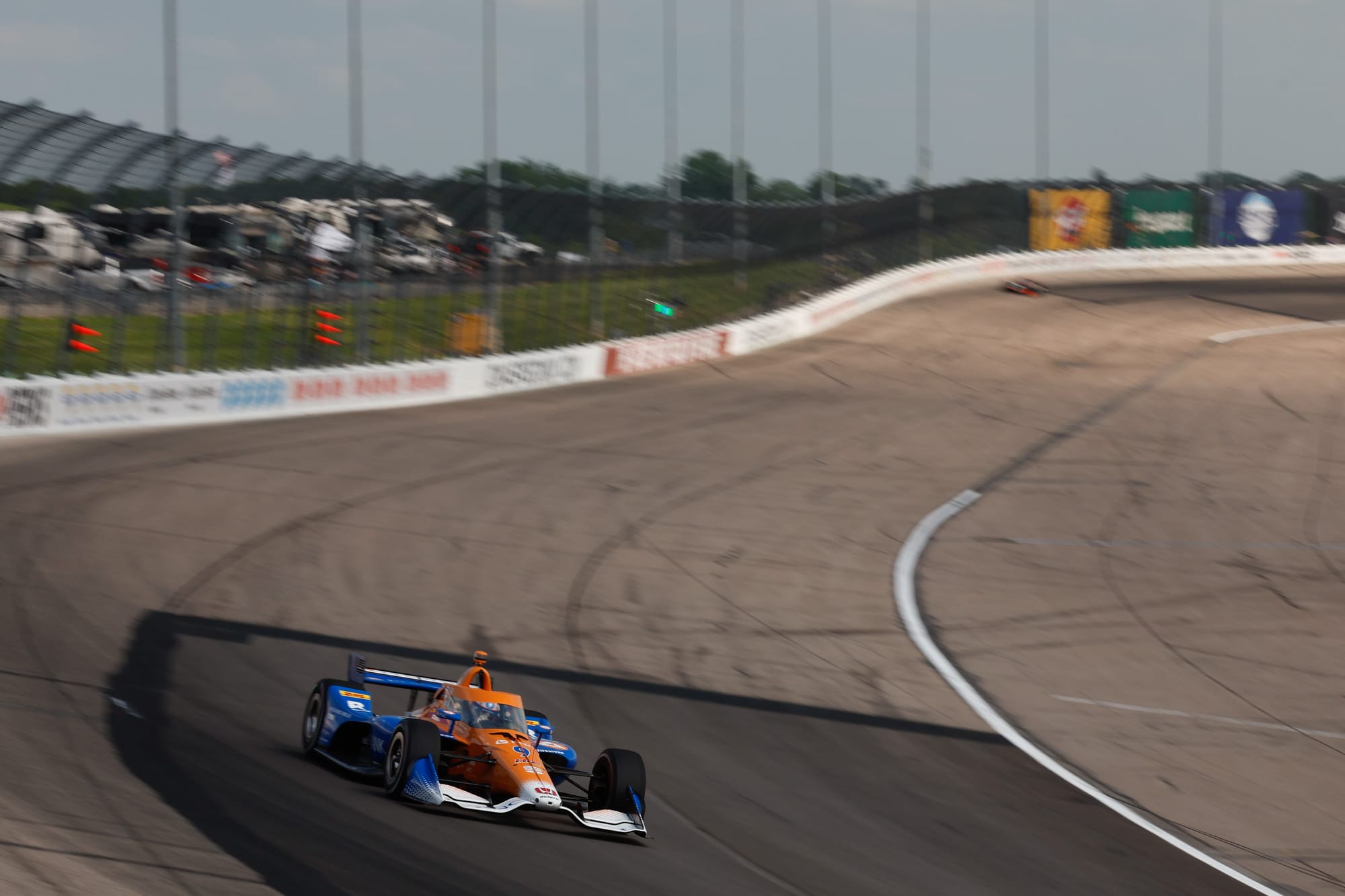
Ahead of NASCAR’s return to Iowa earlier this year, the bottom two lanes of the track were resurfaced, just in the corners, at both ends of the circuit.
With IndyCar’s current car package, oval racing has been difficult in certain conditions in terms of avoiding having one lane around the bottom of the race track that is clearly the most favourable to use.
Things were complicated further by IndyCar adding hybrid power, and Iowa being the first oval race to feature the new unit, which is making the car somewhere around 30kg heavier than it was previously.
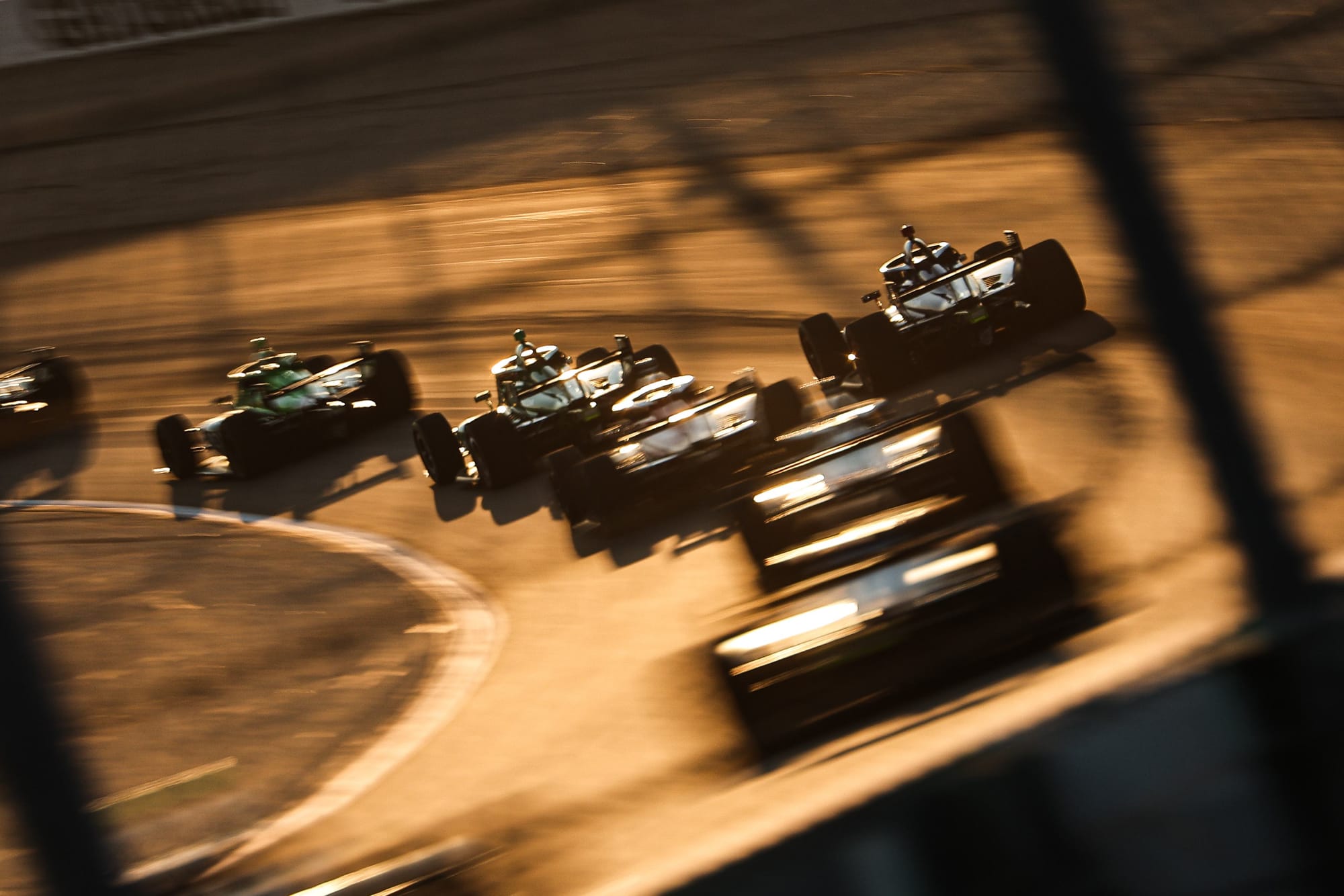
After a recent test in preparation for this event, IndyCar also decided that it needed to reduce downforce levels because with the repaving, speeds were extremely high.
That meant the new tyre brought by Firestone was developed without knowledge of these last-minute changes.
The recently held NASCAR race was an enormous hit with drivers and fans. However, trying to make a direct comparison between the NASCAR and IndyCar races would be like "putting MotoGP on dirt", Palou reckoned.
"It's a cool track, but you cannot put it on the same and expect a very nice race," he said.
What we learned as the weekend went on
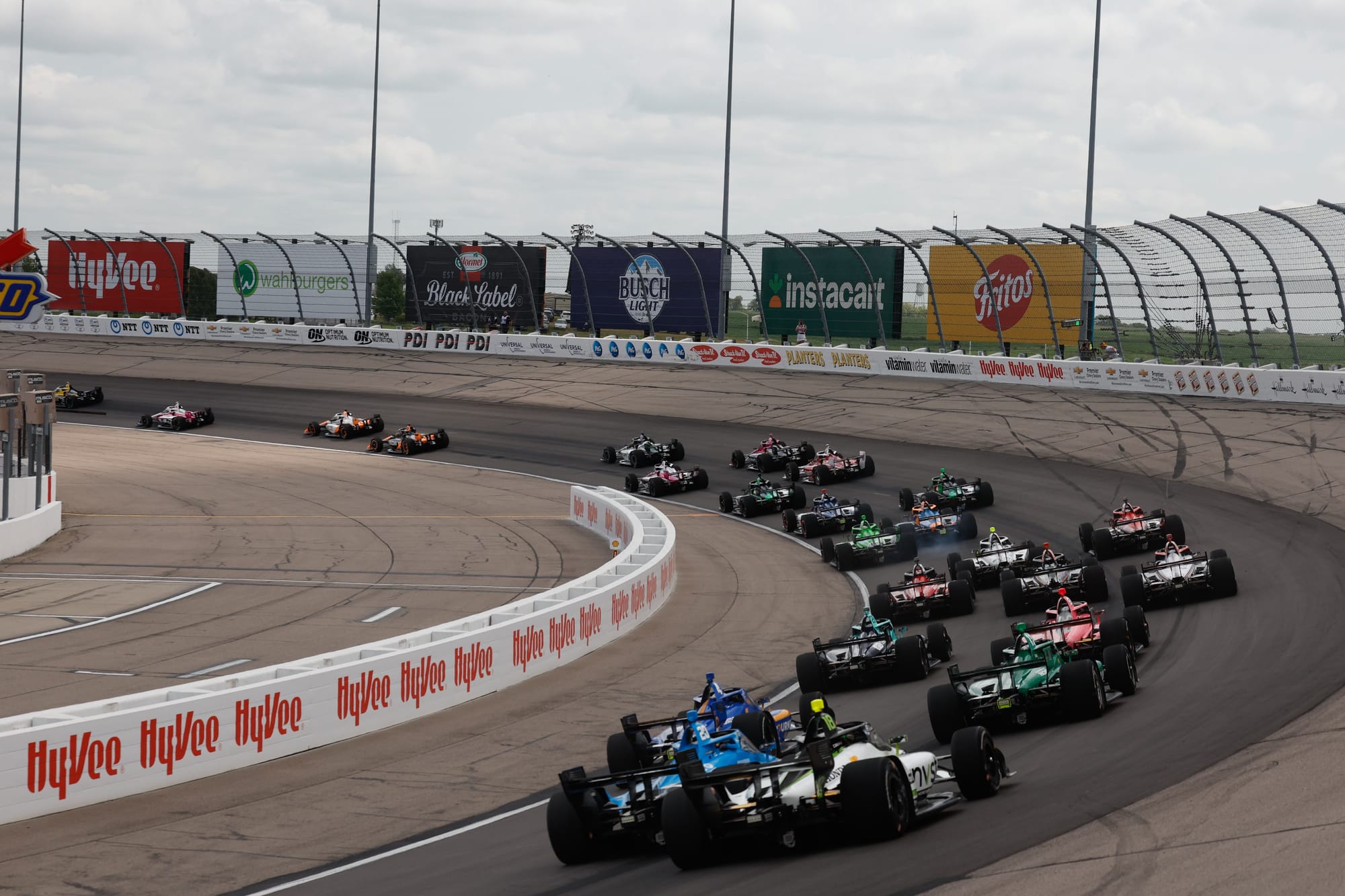
Saturday’s race might be deemed to have been more entertaining, but a lot of that was brought about by a flurry of late cautions, plus championship leader Palou crashing out.
The Sunday race didn’t have that chain reaction of cautions breeding cautions, and not even excessive heat could force the steadfast Firestone rubber to degrade.
The issue was so bad that in race two Power was struggling to pass lapped traffic. He said he just backed off entering a corner for clean air and focused on getting a good run out of the corner, and everybody behind did the same, creating a concertina of boredom.
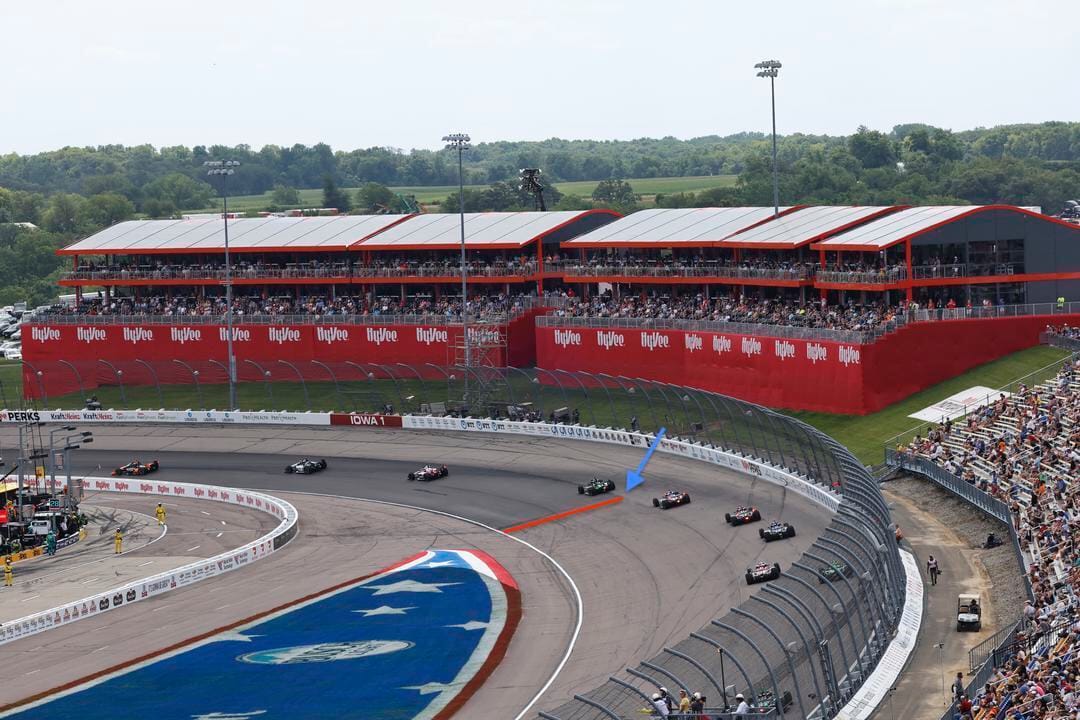
Another issue that emerged was that the repave didn't stretch back far enough down the straight for IndyCar. The ideal line at Iowa is a late turn in, but doing so on the new pavement would take a car from old surface to new surface mid-corner, unsettling its balance in the process.
That meant a much earlier turn-in, which isn’t unheard off but wouldn’t be the prevailing line if you analysed each driver.
Power's theory
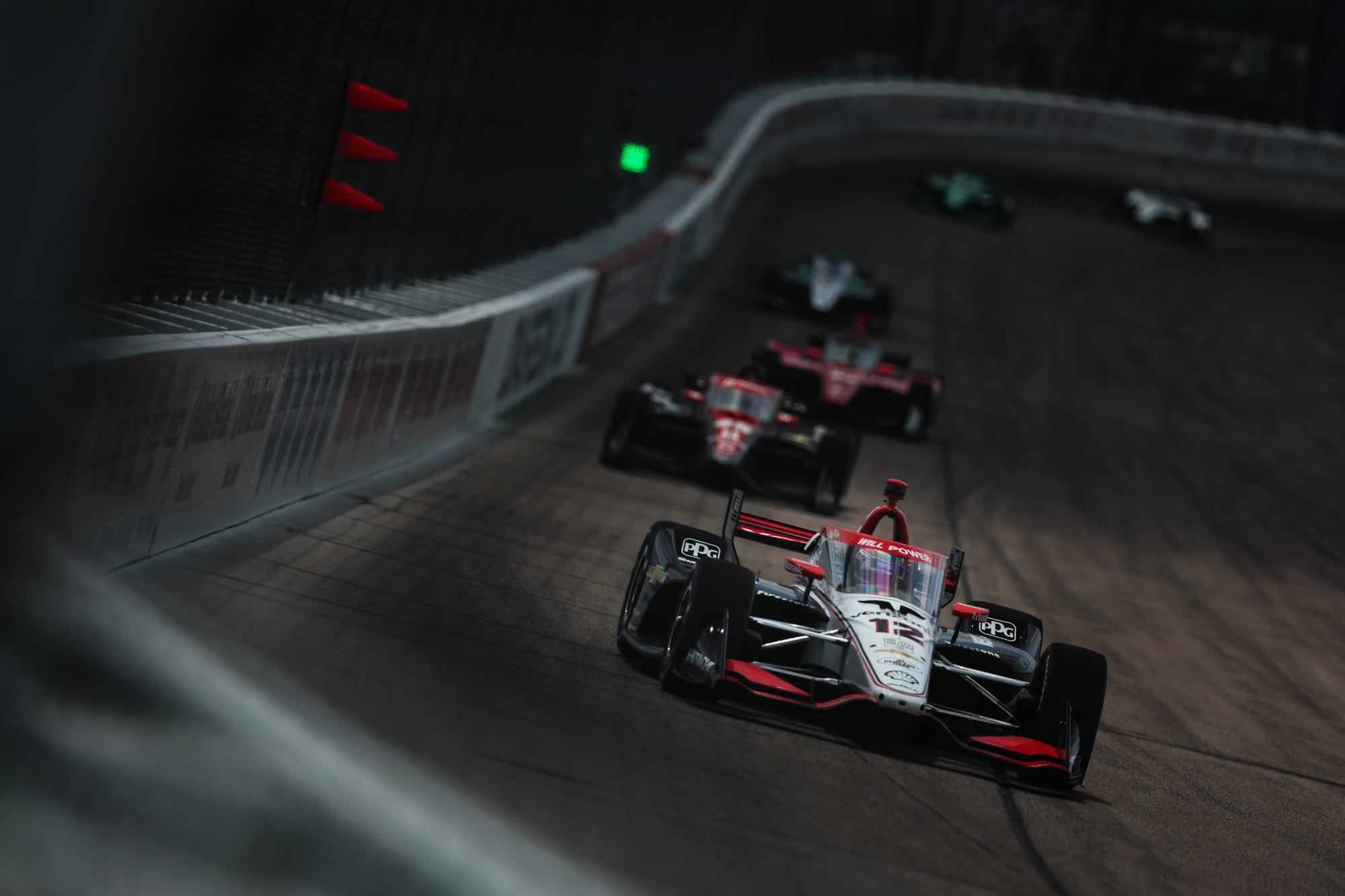
In this scenario where you want to open the higher line, you have two obvious, relatively simple options with the car package.
You get rid of as much downforce as possible to make the cars slower and more difficult to handle, which you hope will encourage overtaking (which is what IndyCar did).
Or you pile downforce on to give drivers enough grip to make the high line work and likely degrade tyres too so that you have drivers with different amounts of grip too.
Power discussed the latter option and had a theory for why it wasn't possible.
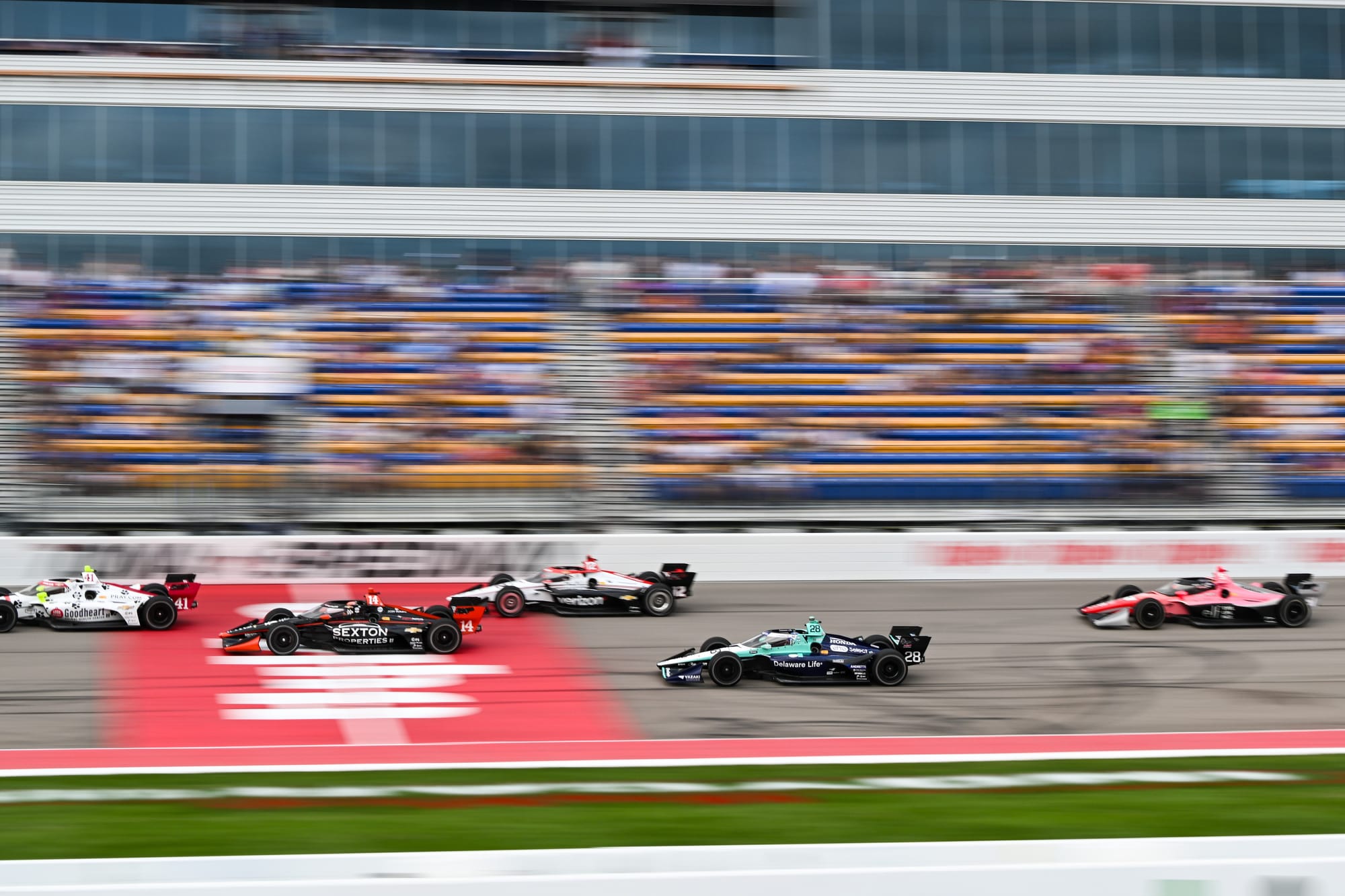
"I just wonder if the car is simply too heavy now," said Power, referencing that aforementioned increase in weight due to the hybrid.
"Then when we add the downforce, it overloads the tyre. I feel like if we were 200lb [90kg] lighter, you could run more downforce, run a softer tire. There's a lot of things that would go toward being able to.
"I think that should be and probably is a big focus of the new car coming in a couple years, is to knock a lot of weight [out]. It's hard to, but I think they really need to focus on that."
IndyCar has introduced a host of new lightweight parts this year which have limited the impact of the additional hybrid being retrofitted to a 12-year-old car. But ultimately it couldn't stop the weight going up.
IndyCar's preventative attempts
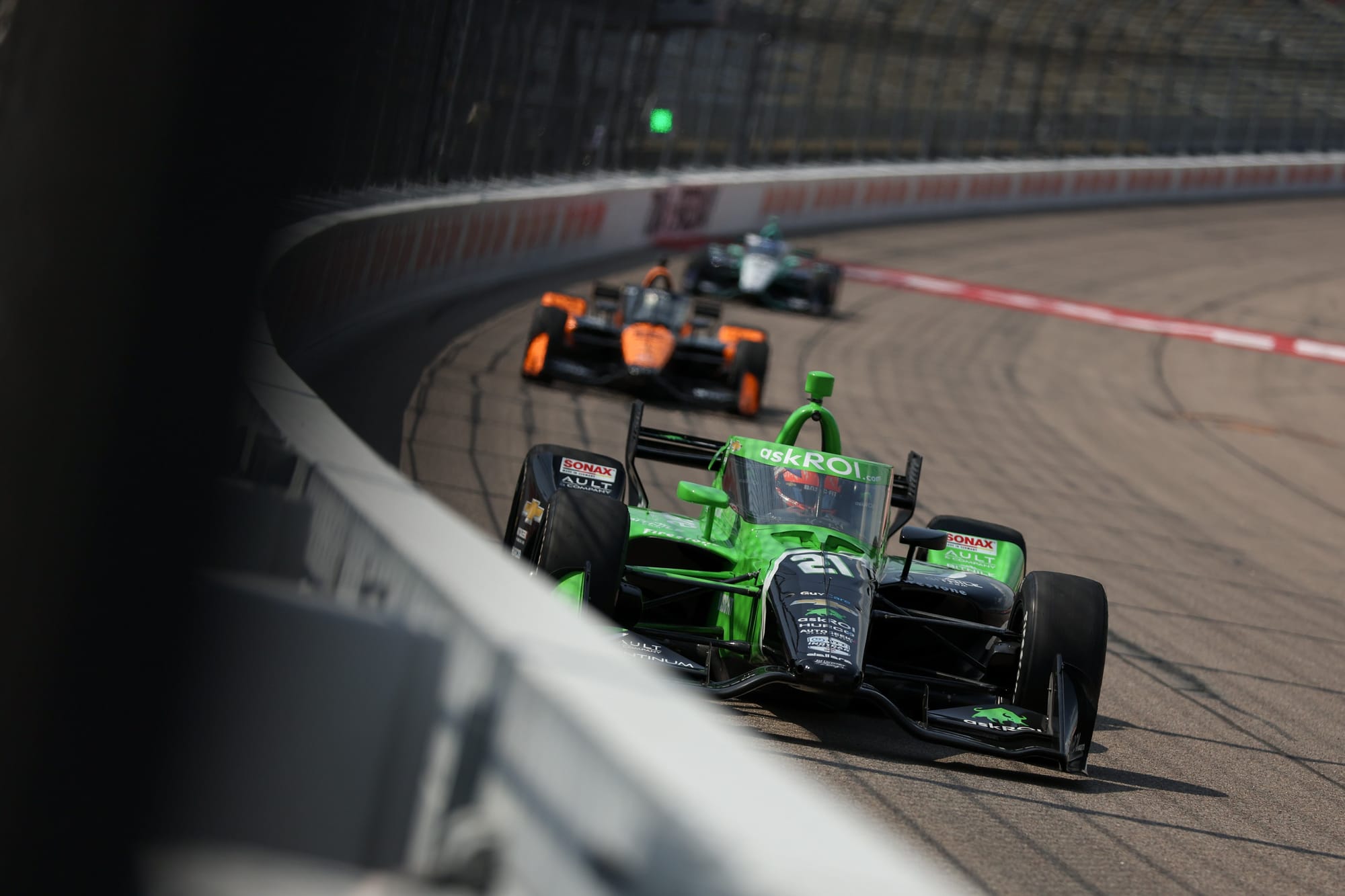
A high line practice session and an extra set of tyres was given to the teams with the aim of adding rubber to provide enough grip to make the second lane usable.
But that extra practice alone wasn’t enough to make the high line grippy and, combined with the detrimental factors above, those measures ultimately didn’t work.
The series tried hard and listened to teams - something it has been accused of not doing in the past - to add that session after the test raised concerns that the high line would be unusable.
IndyCar will no doubt have ideas about how it will change the package. With so many unknowns coming in, a dud race was always a possibility and it proved to be the case at Iowa, despite the series’ best efforts.
Double-header didn't help
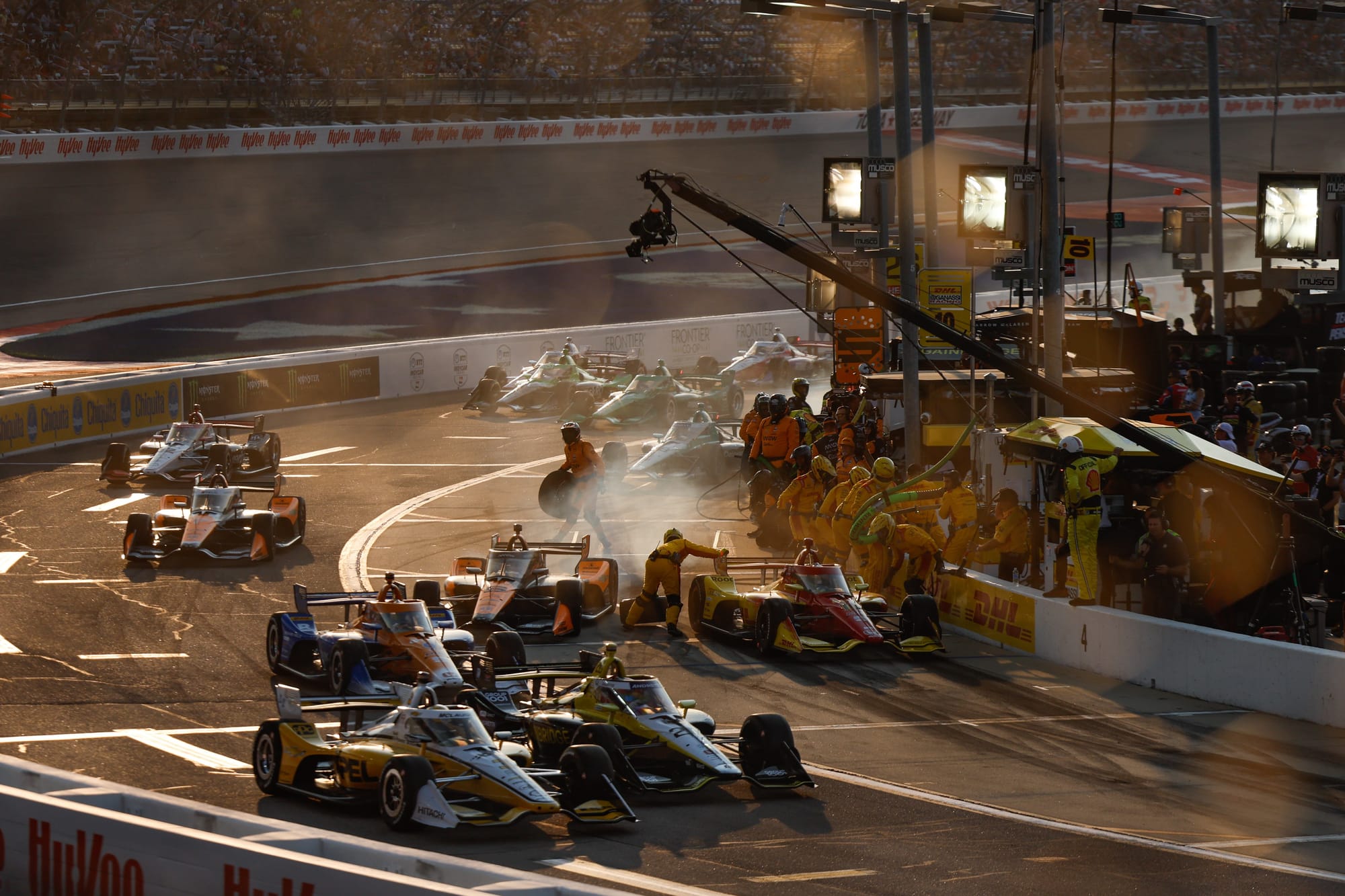
IndyCar has had double-headers for years. The Iowa one is extremely popular, mostly down to the concerts held before or after each race, which have hosted some of the world's biggest acts since it returned to the calendar in 2022.
However, on this occasion we just got two doses of the same disappointing racing. The only thing worse than one bad race is two in the space of 24 hours.
Without wishing to head off on too much of a tangent, it is worth noting that some crews got an hour's sleep between Saturday and Sunday, too, so the format - in this case having a Saturday 'night race' - isn't sustainable.
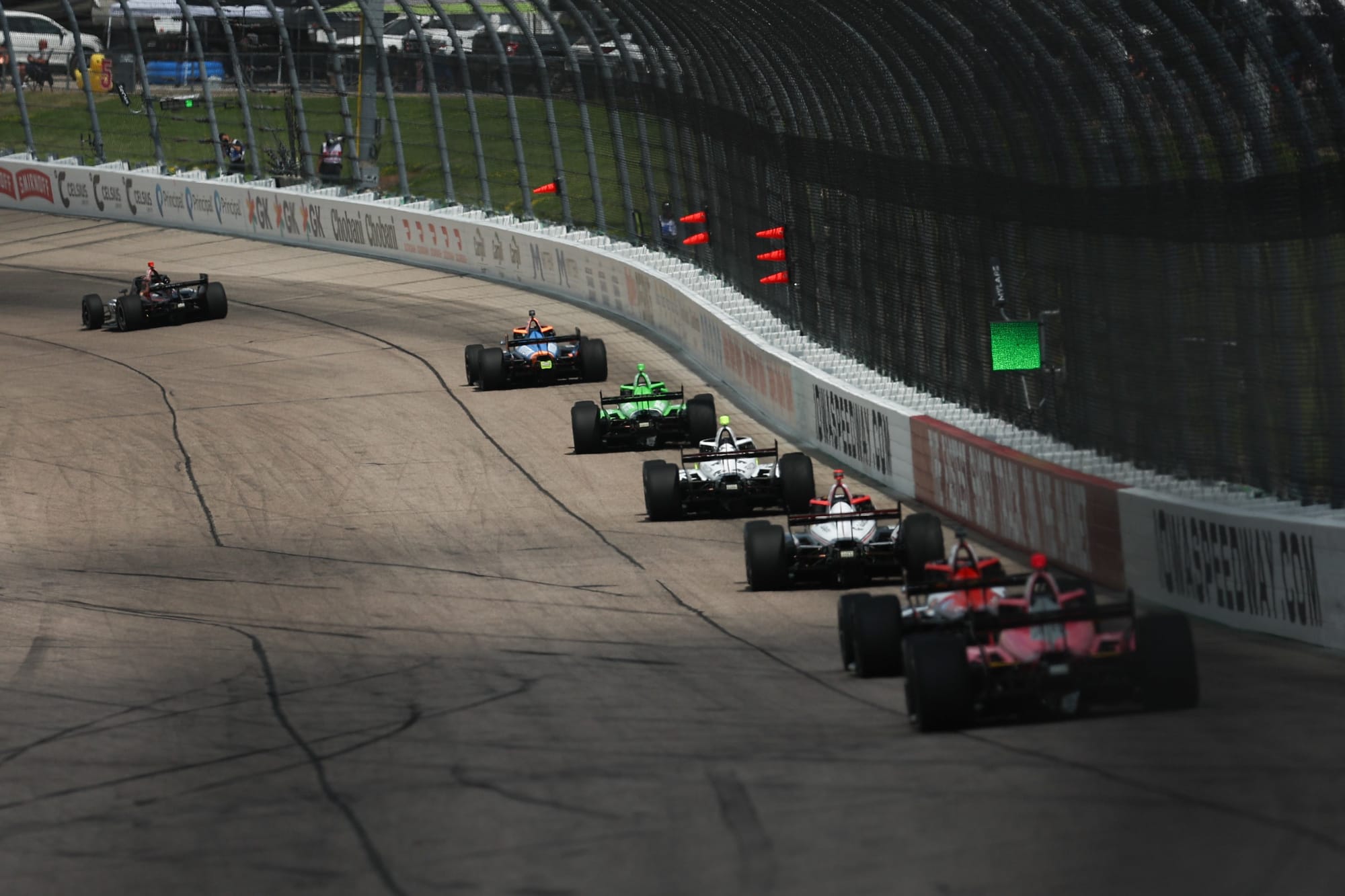
Teams are often complaining about how hard it is to find and keep top-quality personnel, which is mostly down to how much the grid has expanded in recent years.
But taking them to Newton, slap-bang in the middle of Iowa, and working 20-hour days certainly won't be helping either.
There are enough tracks for IndyCar to choose from that it doesn't need double-headers anymore, and perhaps with a new TV broadcaster coming next year - meaning the series won't face a scheduling blackout when the next Olympic Games comes around - there will be more flexible calendar options.
Why this outcome looked unavoidable
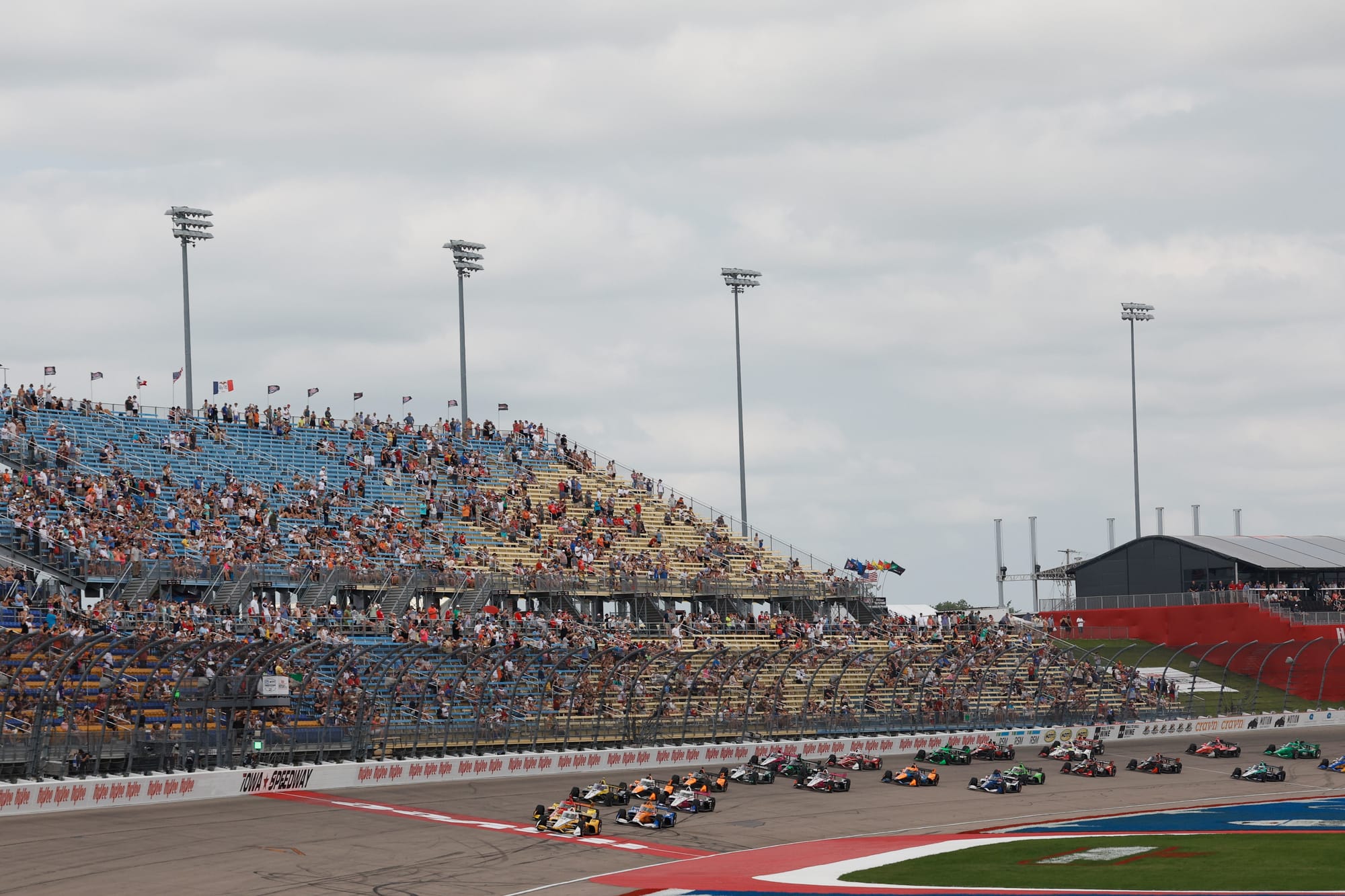
Ultimately, as was the case with Texas, when a track hosts NASCAR and does a repave it will do so with NASCAR as the priority. That’s the biggest show in town and puts bums on seats and millions of dollars in pockets.
Sometimes that’s not an issue for IndyCar, but sometimes it is given they are completely different cars using very different tyres and interact differently on an oval.
Ultimately, any track IndyCar goes to that NASCAR also uses could have this issue in the future.
In my heady world of gum drops and raindrops, an ideal scenario would be that if a track is being repaved, IndyCar should drop it from the calendar until it can do a full test to assess how the racing will be.
But that’s a ridiculous suggestion, even if it is one way to ensure better racing. Tracks shouldn’t be penalised for updating their facilities, testing is expensive, and sometimes repaves are done after calendars for the next year are announced.
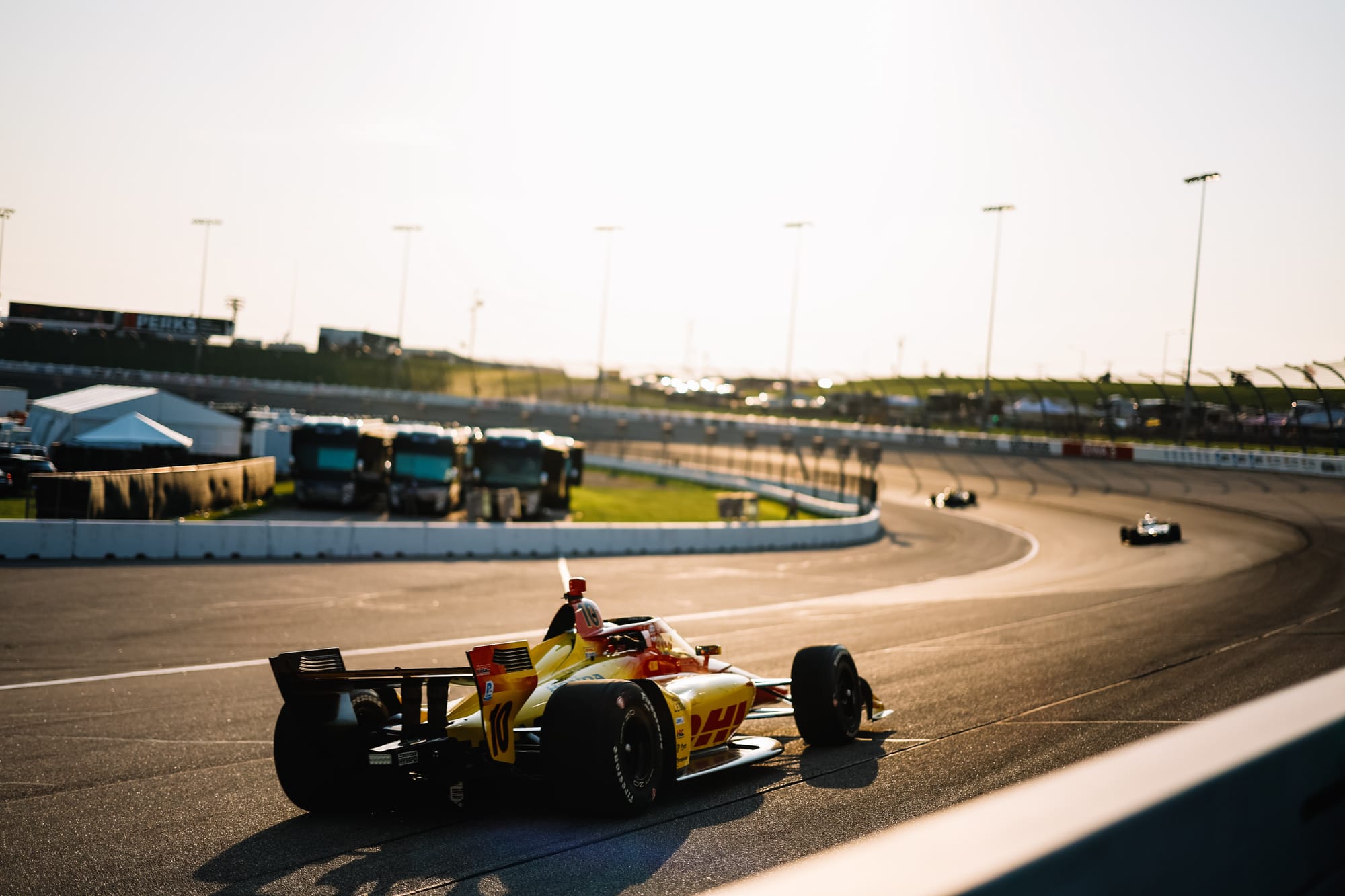
It takes a lot for a driver like Palou to speak out publicly and complain. That doesn't show a groundswell of series discontent, but rather an acknowledgement that this was an unusual set of circumstances leading to an unexpected outcome.
Iowa's been so good for IndyCar in recent years, it didn't deserve this and neither did the fans.
But it can't afford any more of these weekends either.


